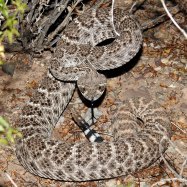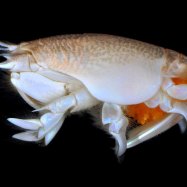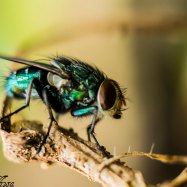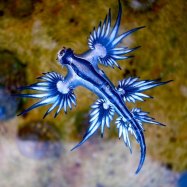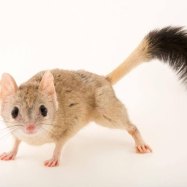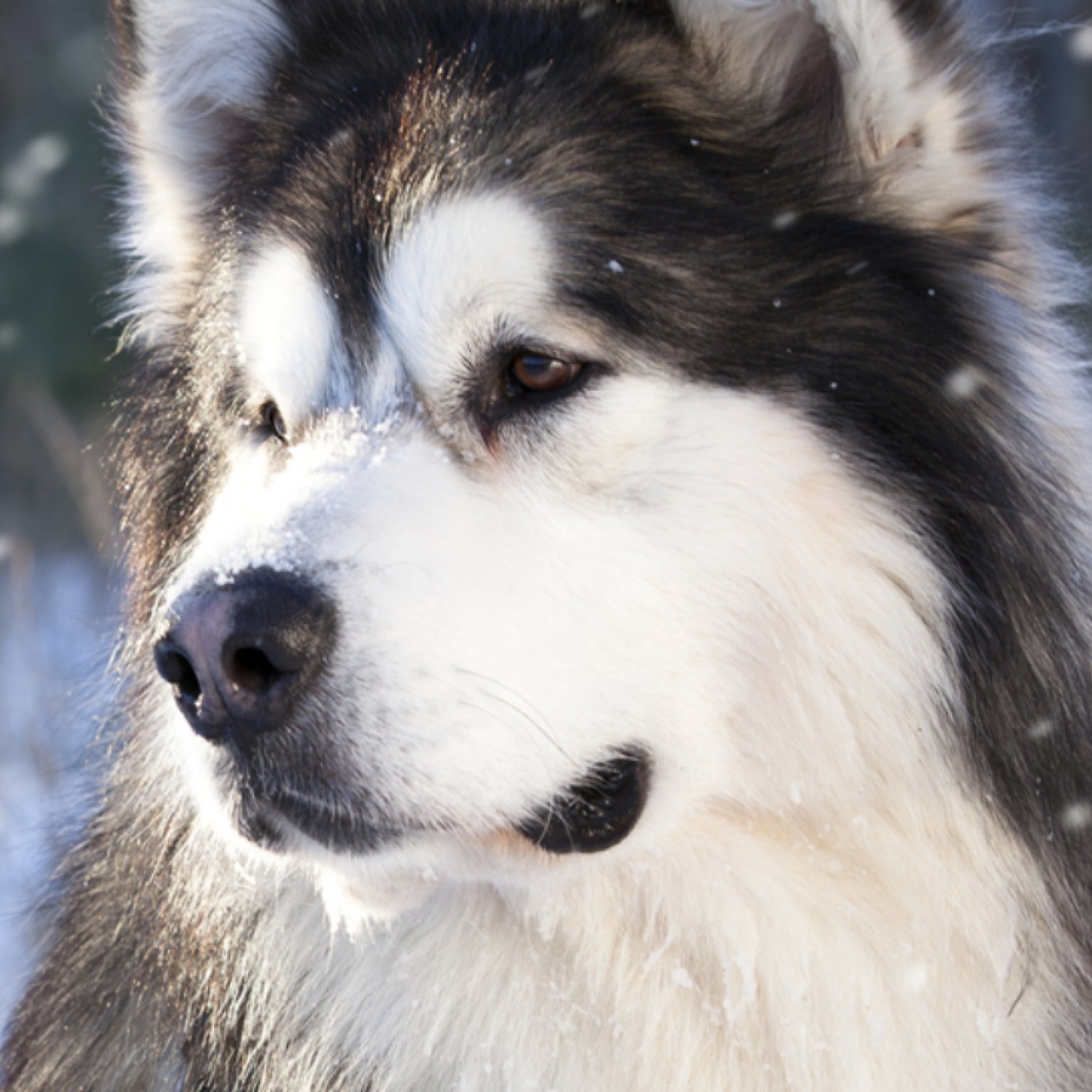
Alaskan Malamute
23-25 inches (58-63 cm)
The Alaskan Malamute is a beautiful and powerful working dog originating from the Arctic. With a length of 23-25 inches and a muscular body, they are well-adapted to the harsh Arctic climate. A member of the Canidae family, these majestic creatures are known for their strength, endurance, and loyalty. Perfect for outdoor adventures and as a family pet, the Alaskan Malamute is a beloved breed among dog lovers.
Animal Details Summary:
Common Name: Alaskan Malamute
Kingdom: Animalia
Habitat: Arctic regions
The Mighty Alaskan Malamute: A Fascinating Arctic Canine
Nestled in the chilly regions of the Arctic, amidst the snow-capped mountains and the frosty winds, lives a majestic creature – the Alaskan Malamute. Considered one of the most ancient breeds of dogs, the Alaskan Malamute is a powerful and hard-working canine that has captured the hearts of people all around the world. With its impressive size, incredible strength, and loyal nature, it's no wonder that the Alaskan Malamute is a cherished companion and an iconic symbol of the Arctic.A Brief Introduction to the Alaskan Malamute
The Alaskan Malamute, also known as the Mal, is a domestic dog breed that falls under the Kingdom Animalia, Phylum Chordata, Class Mammalia, and Order Carnivora Alaskan Malamute. Its scientific name is Canis lupus familiaris, and it belongs to the Canidae family, which includes wolves, foxes, and other species of dogs. This beautiful and robust canine was first bred by the Mahlemut Inuit people of Alaska, and hence the name "Malamute."The Mal's Habitat and Geographical Distribution
As their name suggests, Alaskan Malamutes originated from Alaska in the United States. They were primarily used by the Mahlemut tribe, an indigenous people who inhabited the icy regions of western Alaska, to pull heavy sleds filled with supplies. Their exceptional strength and endurance made them the ideal choice for transportation in the harsh Arctic terrain. However, with the advancement of modern transportation, the Alaskan Malamute's role as a sled dog diminished, and they found their way into homes as loving companions.Today, Alaskan Malamutes can be found all around the world, from the Arctic regions to the bustling city streets. However, their thick coat and sturdy build make them most suitable for colder climates, and they thrive in places with long and snowy winters.
The Diet of an Alaskan Malamute
Being part of the Carnivora order, Alaskan Malamutes have a strictly carnivorous diet Australian Cattle Dog. In the wild, their main source of food would be prey such as seals, caribou, and fish. However, as domesticated pets, their diet typically consists of high-quality dog food that is rich in proteins and fats. It's essential to feed them a balanced diet that caters to their nutritional needs and their active lifestyle.The Alaskan Malamute is a large and muscular breed, and they require a significant amount of protein to maintain their strength and muscle mass. It's recommended to feed them a diet that contains at least 25% protein, preferably from animal sources such as chicken or beef. A high-quality dog food brand specifically designed for large and active breeds would be the best option for an Alaskan Malamute.
In addition to a regular diet, it's also essential to provide them with plenty of fresh water to keep them hydrated, especially if they are living in warmer climates. It's also a good idea to consult a veterinarian to determine the right amount and type of food for your Malamute, as their dietary needs may vary depending on factors such as age, activity level, and health conditions.
The Alaskan Malamute's Distinctive Features
Alaskan Malamutes are known for their striking appearance and their unique coat. They come in various colors, including shades of gray, black, sable, and white. Their thick double coat helps them withstand the freezing temperatures of the Arctic, making them well-suited for their natural habitat.Their build is also quite distinct, with a large and muscular body that exudes power and strength. Male Malamutes can weigh up to 85 pounds (39 kg), while females can weigh up to 75 pounds (34 kg). They have a broad chest, a deep muzzle, and strong, sturdy legs. Their ears are triangular and erect, and their eyes are almond-shaped and usually dark in color, adding to their wolf-like appearance.
The Alaskan Malamute's Temperament and Training
The Alaskan Malamute's appearance might make them seem intimidating, but they are incredibly friendly and affectionate companions. They were bred as working dogs, and thus they have a strong work ethic and a high level of intelligence. However, this also means that they need plenty of mental and physical stimulation to keep them happy and healthy.Malamutes thrive in homes where they have a sense of purpose and can engage in activities such as sledding, hiking, or agility training. They are also known for their loyalty and pack mentality, making them excellent family pets. However, they do have a strong prey drive, so it's essential to socialize them and teach them proper manners from a young age.
Health Concerns for Alaskan Malamutes
Like any other breed of dog, Alaskan Malamutes are prone to certain health issues, some of which are genetic. One of the most common issues is hip dysplasia, a condition where the hip joint becomes loose, resulting in pain and difficulty in movement. It's essential to get your Malamute checked by a reputable breeder or a veterinarian to ensure that they are free from this and other hereditary conditions.Other health concerns to watch out for in Alaskan Malamutes include eye disorders, such as cataracts and progressive retinal atrophy, as well as thyroid problems and bloat. With proper care, nutrition, and regular visits to the vet, the Malamute can live a healthy and happy life of 10 to 14 years.
Bringing an Alaskan Malamute into Your Home
Before bringing an Alaskan Malamute into your home, it's essential to do thorough research and consider if this breed is the right fit for your lifestyle. As mentioned earlier, they require plenty of space, exercise, and mental stimulation to thrive, so apartment living might not be suitable for them. They also tend to shed heavily, so be prepared for regular vacuuming and grooming sessions to keep their coat in tip-top condition.If you do decide to welcome an Alaskan Malamute into your home, it's crucial to find a reputable breeder who cares for the welfare of the dogs and is transparent about the breed's health. A responsible breeder will also provide you with valuable information on how to care for your Malamute, as well as any ongoing support you may need.
The Alaskan Malamute – A True Arctic Warrior
In conclusion, the Alaskan Malamute is a fascinating breed that has been an integral part of the Arctic for centuries. Their strength, endurance, and loyalty make them the ideal working dog, but they also make fantastic and loving companions. From their striking appearance to their friendly nature, the Malamute is a one-of-a-kind breed that is sure to capture the hearts of all those who encounter them. So, what are you waiting for? Get ready to embark on a wild and wonderful journey with your very own Alaskan Malamute!

Alaskan Malamute
Animal Details Alaskan Malamute - Scientific Name: Canis lupus familiaris
- Category: Animals A
- Scientific Name: Canis lupus familiaris
- Common Name: Alaskan Malamute
- Kingdom: Animalia
- Phylum: Chordata
- Class: Mammalia
- Order: Carnivora
- Family: Canidae
- Habitat: Arctic regions
- Feeding Method: Carnivorous
- Geographical Distribution: Alaska, United States
- Country of Origin: United States
- Location: Arctic
- Animal Coloration: Various colors including gray, black, sable, and white
- Body Shape: Large and muscular
- Length: 23-25 inches (58-63 cm)
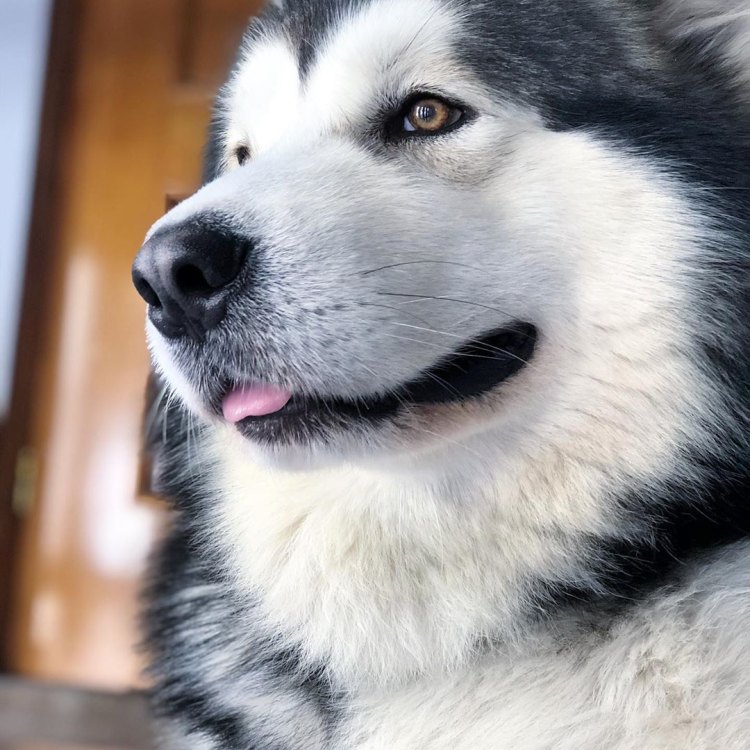
Alaskan Malamute
- Adult Size: 22-26 inches (56-66 cm) at the shoulder
- Average Lifespan: 10-12 years
- Reproduction: Sexual
- Reproductive Behavior: Breeding occurs once a year
- Sound or Call: Howl
- Migration Pattern: Non-migratory
- Social Groups: Pack
- Behavior: Friendly, loyal, and energetic
- Threats: None known
- Conservation Status: Not recognized
- Impact on Ecosystem: None
- Human Use: Sled dog racing, companion animal
- Distinctive Features: Thick double coat, erect ears, curled tail
- Interesting Facts: The Alaskan Malamute is one of the oldest Arctic sled dog breeds.
- Predator: None (domesticated)

Canis lupus familiaris
The Alaskan Malamute: An Energetic and Loyal Arctic Sled Dog
The cold, harsh tundras of the Arctic Circle are home to some of the hardiest and most resilient animals in the world. And among these animals, one breed stands out for its strength, endurance, and loyalty – the Alaskan Malamute.Known for its striking appearance and impressive working abilities, the Alaskan Malamute is a breed that has captivated the hearts of dog lovers for centuries. Let's take a closer look at this incredible breed and discover what makes them unique PeaceOfAnimals.Com.
A Glimpse into Their Size and Lifespan
Standing at an impressive 22-26 inches (56-66 cm) at the shoulder, the Alaskan Malamute is a large, heavy-boned breed with a sturdy and muscular build. Their thick, double coat provides insulation against the harsh Arctic climate, making them well-equipped for life in colder regions.On average, Alaskan Malamutes have a lifespan of 10-12 years, although some may live longer with proper care and nutrition. It's important to note that like any other breed, Alaskan Malamutes also have their own health concerns, including hip dysplasia and eye problems. Therefore, regular vet check-ups and a healthy diet are necessary for their well-being.
Exploring Their Reproductive Behavior and Social Groups
As a breed that has been domesticated for centuries, the reproductive behavior of Alaskan Malamutes is similar to that of other domesticated dogs. They engage in sexual reproduction, and breeding usually occurs once a year. However, it's crucial to note that responsible breeding should only be done by experienced and reputable breeders to prevent any genetic disorders in the offspring.In the wild, Alaskan Malamutes were known to live and hunt in packs Annas Hummingbird. And even though they are now primarily companion animals, they have retained their instinctive pack behavior. As social animals, these dogs thrive in a pack environment, whether it be with other Malamutes or with their human family. This close bond also makes them excellent family pets, as they are friendly, loyal, and protective of their loved ones.
Their Voice and Migration Patterns
One of the most distinctive features of the Alaskan Malamute is their howl, which is often described as deep, mournful, and wolf-like. They use their voice to communicate with their pack or to express their emotions, including happiness, excitement, and even boredom. This unique vocalization adds to their charm and makes them a popular choice for films and TV shows.While some animals migrate to escape the harsh Arctic winters, Alaskan Malamutes, on the other hand, are non-migratory. They are perfectly adapted to the cold temperatures and can survive in temperatures as low as -70 degrees Fahrenheit. Their thick coat, paw pads, and sturdy build make them well-suited for life in the icy landscapes of the Arctic.
The Impact on Ecosystem and Conservation Status
Unlike other wild animals in the Arctic, such as polar bears and caribou, the Alaskan Malamute has no significant impact on the ecosystem. As a domesticated breed, they are not a threat to any other animal species, and their presence does not disturb the natural balance of the Arctic ecosystem.Unfortunately, the Alaskan Malamute is not recognized as a separate species by any major conservation organization. However, they are a beloved breed among dog enthusiasts, and there are dedicated efforts to preserve and protect the breed's purity through responsible breeding and training.
Human Use: Sled Dog Racing and Companion Animal
The Alaskan Malamute's strong and sturdy build, combined with their endurance and love for the cold, make them excellent working dogs. For centuries, they have been used as sled dogs by Arctic explorers and nomadic tribes, to transport goods and supplies across vast distances. Even today, they are a popular choice for sled dog racing, especially in the annual Iditarod Trail Sled Dog Race in Alaska.Apart from their working abilities, Alaskan Malamutes also make wonderful companion animals. Their friendly, gentle, and playful nature makes them a great addition to any family. However, it's vital to remember that they have high energy levels and require regular exercise and mental stimulation to keep them happy and healthy.
Distinctive Features and Interesting Facts
As a breed that has evolved to survive in the extreme conditions of the Arctic, Alaskan Malamutes have many distinctive features. Their thick double coat, erect ears, and curled tail are just a few examples of their unique physical attributes, which make them well-suited for life in the icy tundras.Aside from their physical characteristics, Alaskan Malamutes also have an interesting history. They are one of the oldest Arctic sled dog breeds and were originally bred by the Malamute Inuit tribe for their ability to pull heavy loads over long distances. Today, they are still considered a working breed and are often used to pull sleds in dog-sledding tours.
In Conclusion
In essence, the Alaskan Malamute is an incredible breed with a rich history and unique features. Their friendly and loyal nature makes them ideal companions, and their impressive working abilities make them a valuable asset to human society.However, owning an Alaskan Malamute also comes with a great responsibility. Proper care, nutrition, and training play a significant role in keeping these dogs healthy and happy. With the right care, the Alaskan Malamute will continue to thrive and remain a beloved breed for many years to come.
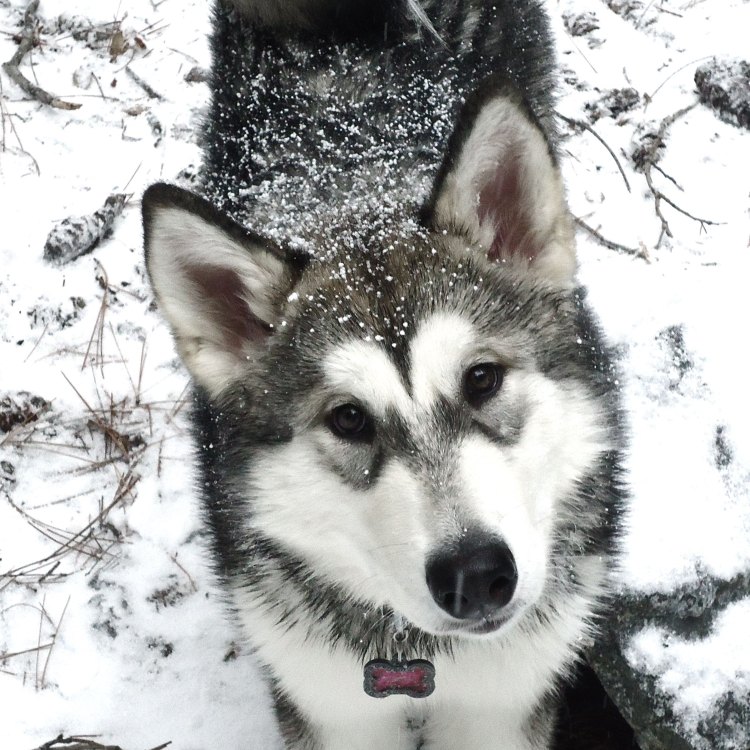
The Mighty Alaskan Malamute: A Fascinating Arctic Canine
Disclaimer: The content provided is for informational purposes only. We cannot guarantee the accuracy of the information on this page 100%. All information provided here may change without prior notice.

